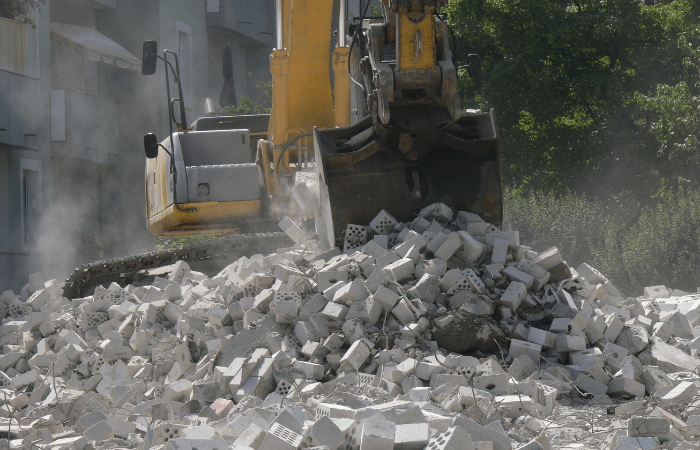Introduction:
The rapid growth of the construction sector in India has led to an alarming concern for construction and demolition (C&D) waste management. This waste includes materials like concrete debris, stones, red bricks, iron bars, wooden doors, and windows. In response to this issue, the Construction and Demolition Waste Management Rules were introduced in 2016, emphasizing the need to manage concrete waste to minimize environmental impact and promote sustainability in the construction industry.
Importance of C&D Waste Management:
Proper C&D waste management is crucial for reducing environmental impact and creating a greener future. The Construction and Demolition Waste Management Rules serve as guidelines to ensure that waste is handled responsibly. Effective waste management can help conserve resources, reduce landfill usage, and foster a circular economy.
Investing in Recycling Facilities:
Investing in recycling facilities is key to managing C&D waste efficiently. By diverting waste from landfills and promoting recycling, the construction industry can reduce its reliance on raw materials. Recycling not only minimizes environmental impact but also has economic benefits, including cost savings and the creation of new economic opportunities.
Challenges and Solutions:
C&D waste management in India faces challenges such as inadequate infrastructure and limited awareness. However, solutions such as promoting sustainable practices and adopting advanced waste management technologies can overcome these challenges. Stakeholders need to prioritize awareness campaigns, invest in infrastructure, and incentivize sustainable practices to ensure effective waste management.
Disposal of Concrete Waste:
Proper disposal of concrete waste is an essential aspect of C&D waste management. Recycling and reusing concrete waste can divert materials from landfills, reduce the strain on natural resources, and minimize carbon emissions. Adopting concrete waste recycling methods can contribute significantly to a greener construction industry.
Benefits of Recycling:
Recycling C&D waste brings numerous benefits. It conserves resources, reduces the environmental footprint, and decreases carbon emissions. Moreover, recycling construction waste can lead to cost savings and create economic opportunities for the industry and local communities.
Building a Greener Future:
Creating a sustainable construction industry in India requires collective effort. By implementing responsible C&D waste management practices and advocating for sustainable solutions, we can build a greener future. Stay tuned for valuable insights and guidance on navigating the complexities of C&D waste management in India. Together, we can make a positive impact and contribute to a cleaner, greener future.
Conclusion:
C&D waste management is a crucial aspect of the construction industry in India. Proper handling and recycling of C&D waste can significantly reduce environmental impact and create a more sustainable future. By investing in recycling facilities, overcoming challenges, and promoting sustainable practices, we can build a greener construction industry. Join us in the journey towards a cleaner, greener India.
